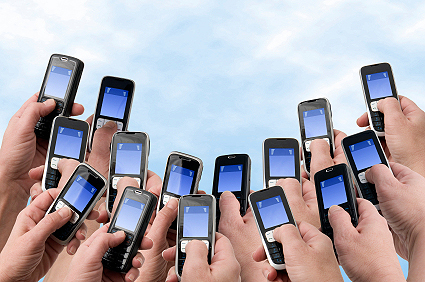
I am a big fan of keeping
marketing focused and brands very simple. Never confuse the customer by
muddying the water with what your product does and how you present it to them.
I have followed such marketing gurus as Al Ries and Jack Trout who have pushed
the idea that a product brand becomes stronger when you narrow its focus.1
That idea seems to be lost on the mobile phone brands, which have become much
more than just phones. They have been marketed as a device that will do just
about everything. Walk into any crowded retail establishment and take inventory
of what you see around you. People across demographic groups are using mobile
phones to search the internet; watch videos; communicate by talking, texting
and emailing; take photos and videos; interact on social media, scan prices on
an app that reads bar codes; and so on. The mobile phone seems to have become
the one device that continues to expand, not narrow, its functionality and
continues to grow its market.
With this in mind, your
marketing has to be suited to a mobile marketplace. If your marketing methods
are not adaptable to a mobile device, your marketing isn’t working. Let’s take
a look at some of the more basic implications of marketing in the world of
mobile devices.
First, your web site needs to
be formatted and functional on a smart phone – Android or iPhone. Understand
that there are certain functions on a desktop or laptop browser that will not
work on a mobile phone. Your web site can be either re-formatted to work on
both or you can put code in place to detect the type of browser that is
accessing your site and push the version of your web site that fits that
browser. Secondly, there are new technologies that allow you to get your
marketing message in front of your target audience instantaneously. Text
messages, e-mail blasts, and social media news feeds all use technology to send
an alert to mobile devices that there is a message ready to be read. When you adapt
your marketing message into one of these real time formats, you will find that
you are getting immediate reactions to your marketing efforts. It is important
to understand the implications of real time marketing. This is not like a
direct mail campaign where you can expect results to trickle in over a couple
of weeks. You can expect to either engage with your market, or not, within
minutes of sending out your message. This creates a format where the success or
failure of your marketing can be measured by the engagement level of your
target market. It also has an impact on the immediacy of the demand for your
products and services. For instance, if you send out a marketing message for a
deal on a product, expect your customers to respond. If you are unprepared with
an inventory that will support the promotion, shame on you. We have a client
who sent out a case study regarding a new product. Within one hour of the
message being sent to mobile devices, all of their customer service reps were
busy answering questions. Understand the medium is built around an immediate
response.
There are plenty of pitfalls
with the immediacy of the new media. There is a temptation on the part of
marketing professionals to get caught up in a quick response/over-promising
dialogue with clients. Make sure you have thought through your promotion before
you start promising things your company cannot deliver. Also, keep the
messaging in the hands of the professionals. Too many CEOs have gotten
themselves in over their heads when they start tweeting or texting. As quick as
all of this happens, the reputation of your company can crumble with one stupid
tweet… it happens every day. Part of the appeal of a mobile marketing strategy
is it is personal and it is immediate, so put some parameters around who
responds to customers on the new media.
__________________
1. The 22 Immutable Laws of Branding, by Al and Laura Ries, HarperCollins, New York, NY, p. 8